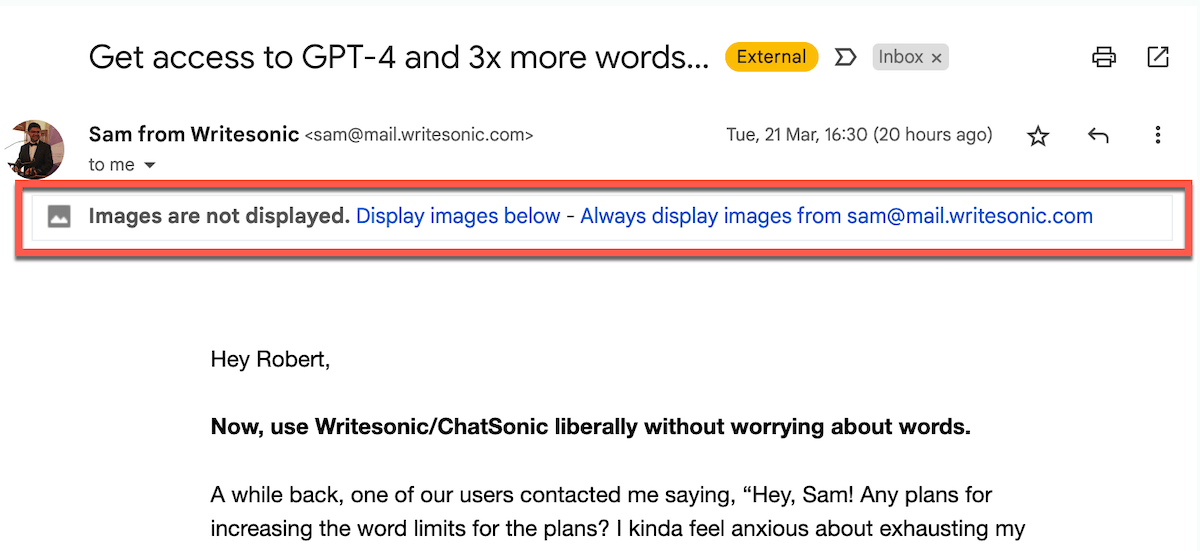Open rates allow businesses to measure how many people open their emails and are one of the most used Key Performance Indicators (KPI) in email marketing.
And while the good old open rate is a useful metric, it's important to understand its limitations and how it's often misunderstood. In this article, I will explore the problem with the open rate metric in email marketing and discuss how it can still be useful when comparing different campaigns and forming a solid email marketing strategy.
What is the Open Rate in Email Marketing?
Open rate is a metric used to measure how many people opened an email. It's calculated by dividing the number of unique opens by the number of emails sent, expressed as a percentage.
Number of unique opens
——————————— X 100 = Open Rate
Number of emails sent
The open rate is typically one of the first metrics marketers look at to evaluate the success of an email campaign. And because the subject line strongly influences the opening behavior, it’s the open rate that serves as the main success indicator for subject line A/B tests.
It’s also common practice for email marketers to resend email campaigns to all the recipients for which they didn’t get an opening indication. Usually the subject line gets changed before resending it.
A related metric which relies on the open rate is the Click-to-open rate. It measures the percentage of people who clicked on a link after opening the email. A high click-to-open rate indicates that people, who open the email, find interesting information to click on. The goal should then be to get more readers to open the email.
A low click-to-open rate suggests that people who read the email, generally didn’t find much interesting information in it that was worth investigating further.
Are Email Open Rates Accurate?
While open rate is a useful metric, it's important to understand how it works in a technical sense. The open rate is measured by downloading an invisible image that’s the size of 1 pixel when the email is opened. This method is not foolproof because:
- People can read the email without opening it in the technical sense: Some email clients allow users to read the email without actually “opening” it. Email clients like Gmail give their users the choice of whether they want to download images. If they decide not to, they can easily read the email without telling the tracking mechanism of the newsletter software that they did.

This is what it looks like when you haven’t downloaded the images in Gmail
- False positives: sometimes people quickly move from one email to the next, quickly clicking through their inbox. If their email client is set up to download the email images, just scrolling past a message can already indicate an open, although they haven’t actually read the message. Opens by bots or spam filters can further inflate the open rate.
- Clicks and opens are measured independently: a strange thing in email marketing is the fact that you can read an email and click a link, which will be tracked as a click-through. But most email marketing services won’t count that as an open unless the images were downloaded.
- Another limitation of open rate is that it doesn't tell the full story. Just because someone opened an email, it doesn't mean that they engaged with the content or took any action. Other metrics, such as click-through rate and conversion rate, provide a better picture of how engaged your audience is.
- Bot activity: Bot clicks and opens happen when automated systems, rather than real people, interact with links in your emails. These “bot” interactions are usually caused by security tools used by companies or email providers to protect users from unsafe content. For example, some email systems automatically “click” on links to check if they’re safe, which can be reported as an open or a click in your email stats, even though no one actually opened the email or clicked a link. This can make it look like more people are engaging with your emails than actually are. While it’s hard to avoid entirely, many email platforms offer tools to help identify and reduce bot activity in your reports.
Apple's Privacy Changes
Apple's Mail Privacy Protection (MMP) is a feature that was introduced in June 2021 for iOS 15, iPadOS 15, and macOS Monterey. When users open Apple Mail for the first time, they will be asked whether they want to enable MMP.
Once this feature is enabled, emails are loaded in a privacy-focused way that hides the user's IP address and prevents senders from knowing when an email is opened.
And this is how it works: Apple Mail downloads newsletter images automatically through an Apple proxy server, which hides the reader’s IP address and thereby blocks senders from receiving this information.
In your campaign reports, this will show as an open, probably somewhere in California (or wherever else, Apple’s servers are located). Depending on your ESP, your open rate on Apple devices may be inflated, and the opening hour or location could also be incorrect.
How the Open Rate Can be Useful
While open rate is an imperfect metric, it can still be useful when comparing different campaigns to each other.
By comparing open rates between similar campaigns, you can identify outlier campaigns – good and bad – that can provide valuable insights into what factors contributed to their success or failure. For example, if one campaign has a significantly higher open rate than another similar one, you can analyze what factors contributed to the higher open rate, such as the subject line, sender name or pre-header, or even sending time, and incorporate those elements into future campaigns.
Additionally, comparing open rates between different segments of the audience can help you understand what types of content and messaging resonate with different groups of people. While open rate should not be the only metric used to evaluate the success of an email campaign, it can provide valuable insights when used in conjunction with other metrics.
Conclusion: Looking Beyond Open Rate
So, what can marketers do to get a more accurate picture of the success of their email campaigns? The key is to look beyond open rate and analyze other metrics with it. Here are some metrics to consider:
- Click-through rate: measures how many people clicked on a link in the email (as a percentage). It provides a better indication of how engaged your audience is.
- Conversion rate: This metric measures how many people took a specific action, such as making a purchase, after clicking on a link in the email. It's an important metric to track because it tells you how many people took the desired action.
- Revenue per email: This metric measures how much revenue each email generated. It's a valuable metric for businesses that sell products or services online.
To improve these metrics, you should focus on optimizing your email content and segmenting your audience. A well-crafted email that's tailored to the recipient's interests is more likely to generate clicks and conversions. Segmenting the audience allows marketers to send targeted emails to specific groups of people, which can increase engagement and revenue.
If you have any questions about open rates, please let me know!
We keep our content up to date
7 Nov 2024: Included information about bot clicks and opens in email marketing
Our Methodology
This article has been written and researched following our EmailTooltester methodology.
Our Methodology
